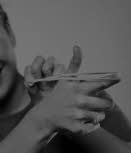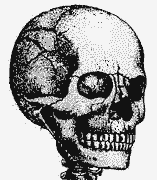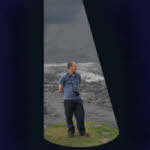Lessons with ‘Gandhi’ at school in 1930’s Earith, but before we get to that…
At the start of each school day, the bell on the roof was rung by an older boy and we all lined up in the playground under our respective teachers and filed quietly in.
![[10] At school in 1930s Earith 1 Earith British School for primary school children. At school in 1930s Earith.](https://notmanywise.uk/wp-content/uploads/Earith-British-School-min.jpg)
Table of Contents:
Standard One at school in the 1930s

I had been moved up from the Infant Room, as it was called, into the Standard One with Miss Chapman, where we had ink to write with and real books with lines.
Shooting paper with elastic bands was about the only thing I can remember.
Then I was moved into Standard Two, where we still shot paper about.
Standard Two at school in the 1930s
After Standard 1, you moved to the middle room and Standard 2.
Here the teacher was another Miss Chapman who came from away and lodged with Mrs. Hard who took in visitors, mainly fishermen, as did two or three other ladies in the village.
Miss Chapman eventually married the son of a fruit grower in the village.
When I was in Standard Two we had ink pens to write with and monitors were appointed to make sure the ink wells were filled.
We had writing lessons on special lined paper and were given marks on how well the letters lined up.
My life in Earith’s early school days was now becoming more industrious.
We did a lot with Plasticine and raffia work, taking the finished product home for Mother to stand a flower pot on.
It was on Thursday afternoon the boys did raffia while the girls did needlework until the children were old enough to do a little gardening.
![[10] At school in 1930s Earith 2 A young John Wales with some family and dogs. At school in 1930s Earith.](https://notmanywise.uk/wp-content/uploads/early-days1-min.jpg)
The plot of the garden I was on received second and third prizes respectively for the best plot.
At break the chief games were either, being chased by a boy who had a bicycle tube doubled and knotted, or throwing cobbles at one another.
The cobbles were taken out of somebody’s pavement and then replaced after use!
![[10] At school in 1930s Earith 3 Earith village sign. At school in 1930s Earith.](https://notmanywise.uk/wp-content/uploads/earith-min.jpg)
Miss Chapman had a very heavy, twelve-inch long, black ruler and occasionally she used this on your knuckles for some misdemeanour!
[Written by John Wales while in the 3rd form at Huntingdon Grammar School]
The Big Room in Standard Three at school
![[10] At school in 1930s Earith 4 Mohandas K. Gandhi, London, 1931. At school in 1930s Earith.](https://notmanywise.uk/wp-content/uploads/Mohandas-K-Gandhi.jpg)
From about the age of nine, you moved up to the Big Room, Standard Three, under the headmaster known as ‘Gandhi’ because of his likeness to the Indian revolutionary of the time.
Here we continued with our writing, read out loud to the class, listened to readings of Samuel Pepy’s diaries and had lessons on mental arithmetic.
On Monday afternoons drawing was the chief subject and the boy who drew the object the best received whatever it was.
Sometimes it was a pineapple, sometimes a bloater and even joints of meat were brought to copy!
Written by Jack Wales February 2008
Memories of the Earith British School
(John Wales speaking and standing near to the Earith British School on Colne Road.)
Headmasters of Earith Primary School in the 1930s
The Headmaster, Mr Leadbetter, (or ‘Ghandi’ as the children called him) always carried a cane which he was not afraid to use and it was reputed that these canes were bought by the bundle!
In approximately 1937 a new headmaster was appointed – Jack Davies.
Children attended school from the ages of 4 to 14 years with 3 classes in the entire school, each class consisted of approximately 20 pupils.
At the age of 11, pupils had a chance to pass an exam and attend the Grammar School in Huntingdon (or Ramsey for Colne children).
Fee-paying pupils could also attend Grammar schools.
Skeele’s Charity would make donations for books required by the pupil for the Grammar school.
Outings and class time
![[10] At school in 1930s Earith 5 Ducks swimming on the pond at Earith.](https://notmanywise.uk/wp-content/uploads/duck-pond2-min.jpg)
The school had outings which the children paid for during the year and on these occasions, Mr Worsdell of ‘Kingscroft’, Earith High Street, would use one of his buses to transport the children.
![[10] At school in 1930s Earith 6 Kingcroft, High Street, Colne where Mr Worsdell lived in the 1930s. At school in 1930s Earith.](https://notmanywise.uk/wp-content/uploads/Kingcroft-Earith-min.jpg)
I started in the Infants Class, known as Standard 1, and my teacher was Miss Chapman she lived with her parents and sisters in the Railway Gatehouse near the sluice, at the Hermitage.
We used an Abacus to learn to count and also learnt how to lace up our own shoes and boots properly!
A giant Christmas tree for school in 1930s Earith
At Christmas time we made coloured paper chains and lanterns for decorations.
We had so big a Christmas tree we used to open the trap door into the roof to let the top go up — that was down at the other end in the big room.
Mr Edwards from the village, he was a wholesale fruiterer in London, Smithfield Market, he always supplied it, massive thing, and we all got a prezzie and the youngest girl in the school got the fairy off the top.
![[10] At school in 1930s Earith 7 The Duck Pond near to the British School, Earith. At school in 1930s Earith.](https://notmanywise.uk/wp-content/uploads/duck-pond-min.jpg)
Brothers stick together
We had a family in here called Parkers, the older one known as Chucky, the younger boy used to be in this room, the middle boy used to be in the other one and the older boy in the far room so if anything happened to either of them they could hear what was going on and then this one would rush into our room, the big one would rush in and they’d all support him.
This particular day ‘Ghandi’ was hitting, you know, with the hand out with a cane and in the end the boy ran out and ran down the Back Lane (Chapel Road) and Ghandi, that’s the headmaster, he got on his bicycle, cane still in hand, and followed him, the two other brothers and all us other lads all ran down Back Lane.
(Extracts from ‘Keeping Time by the Crows’ University of Cambridge.
John Wales retains copyright on original contributions)
Headmaster’s cane and a skull
In Standard 3 discipline was very strict.
The headmaster carried a cane permanently in his hand and this had a pig’s tail at one end and could be bent in two without breaking.
He had a supply of these — they came in brown paper bags — and he administered punishments with these, the cane being taken up to his shoulder and down across the palm of your hand, leaving a red weal across it.

I remember on one occasion the builders were pulling down the Black Bull pub between Enderby’s grocer’s shop and Micky Day’s sweet shop, nearly opposite The Hut.
There was a rumour that a skull had been found under the foundations so, on the way to school that morning, we stopped to watch.
That was all the boys from the big room, with the exception of Binkie Vinter.
By the time we eventually arrived at school, morning prayers had started and the headmaster had locked the doors.
So we all waited in the porch until he opened the door and let us in.
Then he lined us up right across the room, in front of all the girls and Binkie.
We put out our left hands which he hit with the cane and out with the right hand on the way back!
I had a red wheal across both hands that I nursed under my armpits for the rest of the morning!
Laddish injury
There was an open hovel and at the back was where they kept the coke, behind a partition and Dick Seamark used to come and take it over there and put it in the boiler house.
There were beams on the wall over the partition and us lads used to jump off there and grab the beam and swing.
We were doing this on Christmas Eve, the day of the party, and I tried to go and see who could get furthest along the wall.
I went along with the weight of my body, I sprained my wrist so my mother had to hire Mr Mail who ran the taxi service to take me to the doctor and I came to the school party with my arm in a sling.
Gardening in 1930s Earith
[There were] lovely gardens [behind the bungalow] they were divided into plots, you had two boys to a plot, a younger one and an older one.
All vegetables, and potatoes (were grown).
I remember we won the second prize because of deep digging – being a farm lad, I could dig deep.
The Head Mistress, she, had a garden of her own down that side, just grew flowers and roses, and a lad called Chicken Annis he was her sort of gardener and later on he was Mr Fuller’s handy boy — used to take his dog for a walk.
(Extracts from ‘Keeping Time by the Crows’ University of Cambridge John Wales retains copyright on original contributions)
Earith School Concert 1912 ‘The Doll’s House Party’ and ‘Sir Christus the Good’.
![[10] At school in 1930s Earith 8 Earith School Concert 1912 programme.](https://notmanywise.uk/wp-content/uploads/earith-school-concert-min.jpg)
The Programme of Earith School Concert: 18th and 19th December 1912
Pianoforte Duet: ‘Merry Skaters’ Ida Searle and Nellie Warren.
Song: ‘The Kings Own’ B. Parren.
Play – ‘The Dolls House Party’:
Mistress Doll: Constance Thoday.
Little Dolls: Elsie King, Ethel Attwood, Doris Setchell, Willie Brown, Henry Draper and Edward Careless.
Housemaids: Kathleen Goodband and Olive Few.
Cook: Gladys James.
Page: George Harradine.
Guests: Margery Claxton and Eleanor Wilson.
Black Doll: Frank Casburn.
Dancing Dolls: Maggie Haddock, Kathleen Thoday, Daisy Moore, Muriel Thoday and Doris Kelly.
Young Lady Dolls: Lynda King, Mabel Newman and Violet Flavel.
Old Lady Dolls: Florrie Attwood, Iris Poole and Elsie Balls.
Pianoforte Solo: ‘March Militaire’ Gertie Hensman.
Song: ‘The Golden Vanity’ Clem. Thoday.
XMAS OPERATTA: ‘Sir Christus the Good’:
King: B. Parren.
Queen: Nellie Warren.
Sir Christus: Clem. Thoday.
Lady Christus: Ida Searle.
Lady Goodheart: Ida Holmes.
Chancellor: E. Butcher.
Messenger: W. Bedford.
Courtiers: Sir Just: R.Topper.
Sir Malice: H. Bradshaw.
Sir Self: W. Seamark.
Sir Greed: F. Warren.
Knights: Ronald Brown, Herbert Rawlings, Fred Semark and Willie Gray.
Queen’s maids and ladies: Elsie Bedford, Connie Bradshaw, G. Maile, E. Dring, W. Casburn, V. Allgood, Susie Munns, Ethel Bedford, Lily Holmes, G. Day, Edith Goode, Q. Poole and G. Setchell.
Santa Claus: W. Seamark.
Elves: Donald Parren, Eddie Peacock, Geo Barnes, Bert Bradshaw, Reg. Skeggs and Alf. Seamark.
Poor: W. Wilson, F. Harradine, W. Setchell, B. Murfitt and Rushbrooke Goode.
Jester: Q. Moore.
Accompanist: Gertie Hensman.
The next article [11] 1930s school playground
Or see the first article in this series: [1] 1930s Earith National Fishing attraction
References – open in new tabs:

